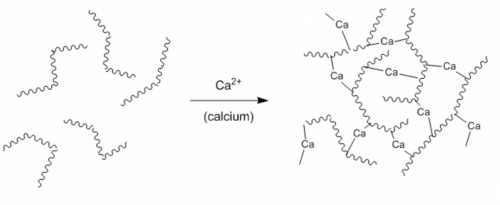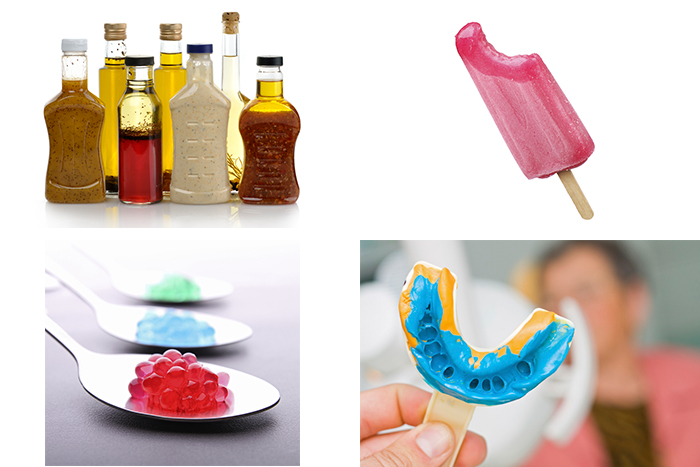What does all-natural mean?
Take a look at the picture below. You are looking at an underwater forest comprised of giant bladder kelp. Giant bladder kelp. Sounds delicious, right?
OK, maybe not so much, but through some straightforward chemical changes, a molecule found in this and other kelp makes its way to a variety of food, pharmaceuticals, and dental materials you are sure to be familiar with.
The scientific name for giant bladder kelp is Macrocystis pyrifera, and it is the largest of all algae. Even if you live hundreds of miles away from the oceans in which these kelp forests grow, chemicals from this plant are likely in your lunch bag and dinner plate.
 Next time you enjoy some creamy ice cream or zesty salad dressing, thank kelp!
Next time you enjoy some creamy ice cream or zesty salad dressing, thank kelp!
Velvetfish/iStock/Thinkstock
Chemicals called alginates are extracted from seaweeds such as giant kelp. These alginates are combined with elements such as sodium, potassium, and calcium to form a gum. If you’ve ever touched seaweed, you are probably familiar with its slimy residue. This slimy residue is used as a product in chemical reactions in order to thicken foods or produce gel-like foods that many people find appetizing. Alginates are a polysaccharide. Whenever you see the world “poly” to describe a chemical, that means they are made up of many (poly) of a repeating unit. In this case, the formula for the repeating unit is C6H8O6. This is the alginate. It exists as long chains. When it is brought together with salts containing calcium, potassium, or sodium, it forms a gelatinous “mesh.” It adds a gummy quality to a substance without imparting flavor.
 Chains of alginate form into a gummy mesh at the molecular level.
Chains of alginate form into a gummy mesh at the molecular level.
Image from scienceandcooking.seas.harvard.edu.
This property of alginate is incredibly useful for a number of food and pharmaceutical uses. Alginates is used in medicines such as antacids. In dentistry, alginate is used for dental impressions. It provides texture and maintains freshness for salad dressings. It is also used in a number of frozen treats. For example, it helps provide uniformity of fruit flavor and slow melting and dripping in popsicles. Alginate is also used in a process called food spherification. This is a process in molecular gastronomy, an approach to cooking that examines the chemical and physical changes that ingredients go through. Food spherification shapes liquids such as green tea or apple juice into tiny spheres that can pop in your mouth.
 The gummy properties of alginate are useful in a variety of food and pharmaceutical items. You will surely recognize some of these while others are a bit more exotic. Dressing: svetlana foote/iStock/Thinkstock; Popsicles: SasaJo/iStock/Thinkstock; Food speheres: margouillatphotos/iStock/Thinkstock; Dental impressions: Alexandru Kacso/iStock/Thinkstock
The gummy properties of alginate are useful in a variety of food and pharmaceutical items. You will surely recognize some of these while others are a bit more exotic. Dressing: svetlana foote/iStock/Thinkstock; Popsicles: SasaJo/iStock/Thinkstock; Food speheres: margouillatphotos/iStock/Thinkstock; Dental impressions: Alexandru Kacso/iStock/Thinkstock
As long as seaweed continues to be plentiful, we will have the raw materials from nature to continue to develop alginates. Bet you never thought of yogurt or popsicles as sea (weed) food!
